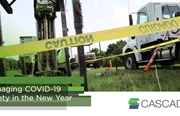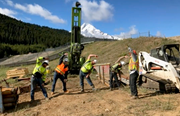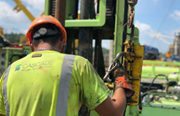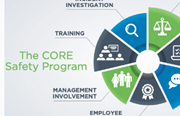Why Stop Work Authority Programs Make A Difference
By: CascadeAt Cascade Environmental, safety is a top-priority. At the end of a long day on the job site, it's important that everyone return home to their families, ready to take on the challenges of the oncoming day. Setting high safety standards ensures that we deliver on our promise to you and our employees.
We’ve already talked about Cascade Cards, our hazard recognition program, in a previous blog post. With this program, team members, at every level in our organization, and clients alike are given the means to document and report on jobsite safety concerns. The Cascade Card program is extremely valuable to our operations as it keeps our clients and team safe while helping us to hone our safety standards and our onsite practices over time. It’s just one component of our CORE™ Health and Safety Program.
CORE™ is a behavior-based approach to safety focused on incident prevention, and it encompasses many different aspects of Cascade’s operations. While the Cascade Card program helps us improve operations overtime, sometimes certain onsite challenges require a more immediate response. That’s why we maintain Stop Work Authority on all of our job sites.
A Brief Overview of Stop Work Authority
Stop Work Authority (SWA) is a policy designed to protect clients and employees from causing an incident that could result in harm to people, property, or the environment. All work impacted by the condition in question must stop when anyone activates SWA. The SWA cannot be lifted and work cannot resume until everyone on site understands and agrees that control of the risk is clearly established and understood site wide. Once the risk has been mitigated, operations may resume.
Federal workplace laws require employers to provide a safe working environment. Additionally, under Federal Law, workers are allowed to refuse any work assigned to them if they feel there is legitimate risk involved. But what about work that’s assigned to others?
An effective Stop Work Authority (SWA) policy extends to all persons present on a job site. Crew members and bystanders have the requirement, right, and responsibility to stop any work (performed by either themselves or another crew member) at the moment a condition which presents a significant safety hazard or may lead to an incident is recognized.
An Example From Cascade Environmental
On a recent sonic drilling job site, while tracking between holes using a sonic track rig, the crew determined that they had to remove a fence to get the rig to the proper location. In doing so, the crew noticed a conduit pipe with wires running through it at the base of the fence. Immediately, the crew utilized Stop Work Authority until they could speak with our client. After speaking with both the client and the owner of the lines, it was determined that the lines were indeed energized. An electrical contractor was then called out to de-energize the lines and remove the wires and conduits.
We chose this Stop Work Authority example as the one to share because all the proper steps were followed to keep both our client and our team safe:
- Crew performed risk assessment, identified the hazards, and took mitigating actions.
- Crew utilized Stop Work Authority by informing the client that they could not continue until they had confirmation that the line had been de-energized and the wires and conduit removed.
- Crew waited until the electrical contractor de-energized and removed the electrical lines before resuming work.
To put it bluntly, safety procedures like this are necessary because they keep our organization running properly. The only way to improve our services and ensure the safety of our clients and employees alike is to have everyone, most importantly those on the ground at the job site, on the lookout for potential safety concerns.
If you know of ways in which Cascade can improve safety, or any other aspects of our operations, we encourage you to fill out a Cascade Card - it’s how we grow and we continually provide unbeatable service for our customers.









